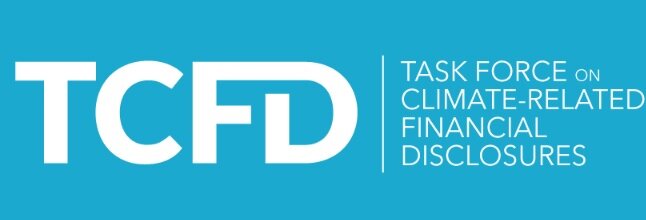Climate disclosure, credit ratings and Canada

OPINION
The One Planet Summit, which took place in Paris late 2017, commemorated two years since the 2015 Paris Climate Agreement and the establishment of the Financial Stability Board’s Task Force on Climate-Related Financial Disclosures (TCFD). It looked at the progress that has already been made and explored how all parties can uphold their climate pledges and help to reduce global warming.
For the TCFD, progress has been significant. The TCFD provides a recommended voluntary framework for investors and companies to disclose how climate-related risks and opportunities affect their business. And with climate change rising on the global agenda, more and more businesses are taking note; the TCFD announced global adoption of their recommendations by 237 companies at the One Planet Summit.
A swell of support
The 237 global companies that have publicly committed their support to the TCFD represent a combined market capitalization of over US$6.3 trillion. Those companies include over 150 financial firms, responsible for managing assets of more than US$81.7 trillion.
 Canadian support has been strong: the Chartered Professional Accountants of Canada, Canada Pension Plan Investment Board, Royal Bank of Canada, Caisse de dépôt et placement du Québec and British Columbia Investment Management Corporation have all committed to TCFD disclosure – to name just a few.
Canadian support has been strong: the Chartered Professional Accountants of Canada, Canada Pension Plan Investment Board, Royal Bank of Canada, Caisse de dépôt et placement du Québec and British Columbia Investment Management Corporation have all committed to TCFD disclosure – to name just a few.
By adhering to the TCFD, these companies are working to provide enhanced and accurate information relating to their environmental and climate (E&C) risks and governance. This entails describing the oversight of climate-related risks and opportunities as well as describing management's role in assessing and managing climate-related risks and opportunities. Alongside governance, companies are encouraged to disclose information around strategy (the actual and potential impacts on the organization’s businesses and financial planning), risk management, and metrics and targets.
So if strong TCFD uptake continues, what could this mean for stakeholders?
Climate in credit
At ground level, widespread adoption of the TCFD’s recommendations could result in comparable and more comprehensive disclosure of E&C factors from companies around the globe. In turn, this could translate into important information for lenders, insurers, investors and other stakeholders. By disclosing identified risks through the TCFD recommended framework, companies would be providing useful consistent public information to all stakeholders, including credit rating agencies, to consider in their analysis.
Climate-related risks and opportunities are incorporated into our credit ratings analysis and reports when S&P Global believes those risks are an important consideration in assessing creditworthiness. Between mid-July 2015 and mid-Aug 2017, E&C factors were cited as relevant to the rating analysis in 717 out of 9,000 published research updates for rated corporate entities. This was a notable increase from our review of the prior two-year period (2013 to 2015), which noted just 299 mentions of E&C factors in our published reports. And – although it is difficult to draw concrete conclusions at this stage – this could indicate that E&C issues are becoming increasingly important in terms of their impact on global corporate credit ratings.
The TCFD's risk and opportunity definition provide a useful framework to help categorize where this diverse set of environmental and climate-related risks and opportunities impacts rating outcomes. In the 2013 to 2015 review an E&C factor – either event-driven or ongoing – was a key driver of a rating action (a change of rating, a change of outlook, or a CreditWatch action) in 56 cases. In the 2015 to 2017 review, this figure rose to 106 cases. Of these, the highest number of rating changes map to the physical risk category under the TCFD’s definitions. Physical risk under the TCFD’s definition can either be acute (event driven) or chronic (representative of long-term shift in climate patterns).
 For example, in June 2016 S&P Global Ratings downgraded Argo Fresh, U.S.-based company that uses SmartFresh – a technology that preserves fruits – to ‘B’ from B+’. This was in part due to physical risk: adverse weather conditions had been a primary driver of the weaker performance due to effects on the global apple crop, which drives an overwhelming majority of the company’s revenues and EBITA. Argo Fresh’s downgrade was also the result of transition risk and market risk – as defined by the TCFD – which included key patent expirations and potential changes in consumer preferences.
For example, in June 2016 S&P Global Ratings downgraded Argo Fresh, U.S.-based company that uses SmartFresh – a technology that preserves fruits – to ‘B’ from B+’. This was in part due to physical risk: adverse weather conditions had been a primary driver of the weaker performance due to effects on the global apple crop, which drives an overwhelming majority of the company’s revenues and EBITA. Argo Fresh’s downgrade was also the result of transition risk and market risk – as defined by the TCFD – which included key patent expirations and potential changes in consumer preferences.
Ultimately, widespread, comprehensive, systematic disclosure can only serve to support more consistent and transparent analysis of climate-related risks, allowing all stakeholders to better understand both the long- and short-term consequences of climate change for the financial markets.
Nicole Martin is Senior Director, Corporate Ratings & Infrastructure, S&P Global Ratings, and a recent speaker at the UN’s Principles for Responsible Investment (PRI) seminars in Toronto and Montreal on environmental, social, and governance (ESG) risk in ratings.
Related News